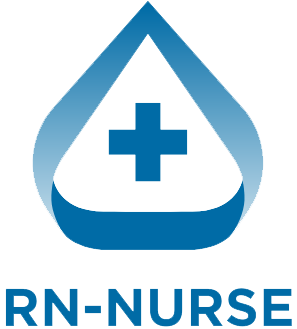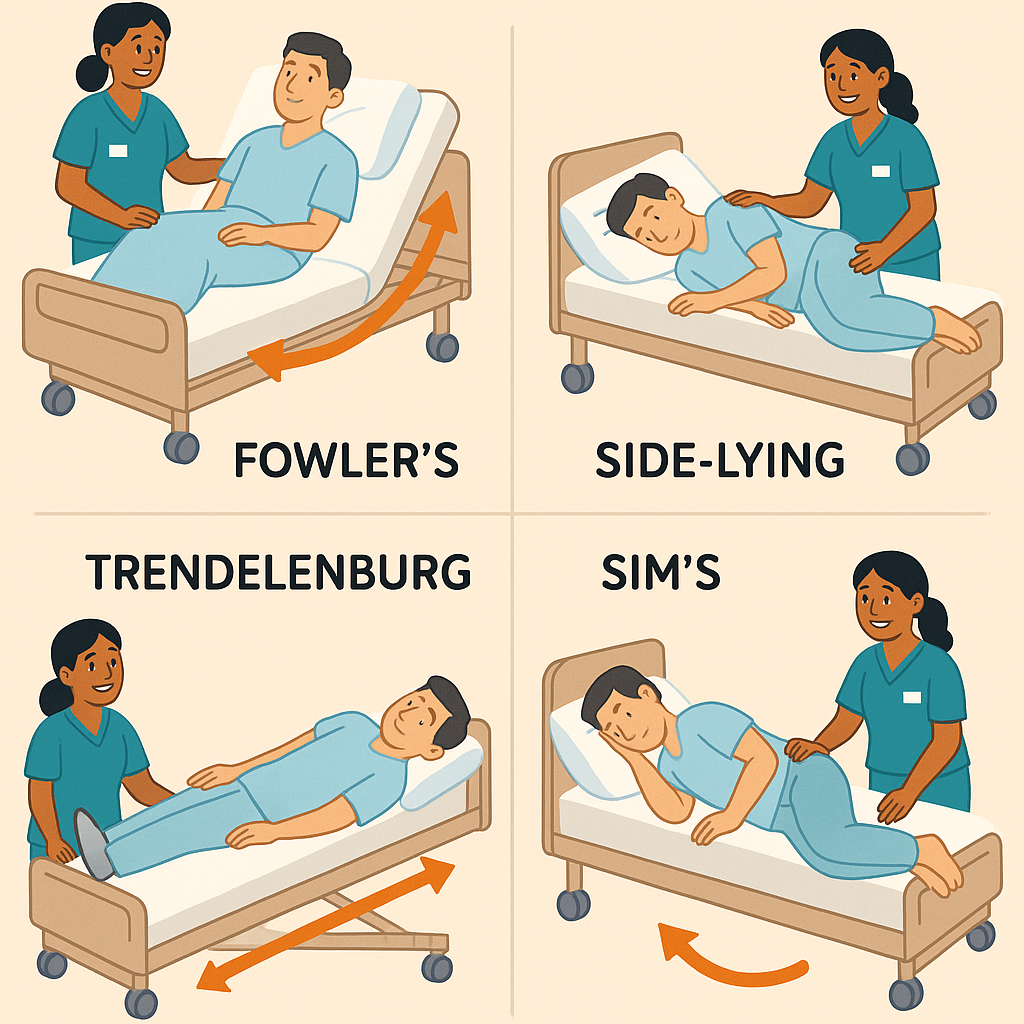Patient positioning is a basic but critical nursing skill. The right position helps with breathing, comfort, treatment, and healing. This quick guide breaks down the most common positions — what they are, when to use them, and tips to do it safely.
🏥 Why Patient Positioning Matters
Positioning affects:
- Breathing: Helps oxygen flow better
- Circulation: Prevents bed sores and blood clots
- Digestion: Aids eating and swallowing
- Procedures: Makes treatments safer and easier
- Comfort: Reduces pain and restlessness
Whether you work in a hospital, nursing home, or home health, you’ll use these positions every day.
📋 Common Patient Positions and When to Use Them
1️⃣ Supine Position
What it is:
Patient lies flat on their back, face up.
When to use:
- For rest and sleep
- After surgery (unless contraindicated)
- During exams or some treatments
Tips:
Use pillows under the head and knees to reduce back strain.
2️⃣ Prone Position
What it is:
Patient lies flat on stomach, head turned to the side.
When to use:
- To help oxygenation in ICU patients (like ARDS)
- For back treatments or certain spinal surgeries
Tips:
Check for pressure points on hips, knees, and face.
3️⃣ Lateral (Side-Lying) Position
What it is:
Patient lies on their side with knees slightly bent.
When to use:
- To reduce pressure on the back
- For sleeping or turning schedule
- Helpful for unconscious patients to prevent aspiration
Tips:
Place a pillow between the knees and under the arm for comfort.
4️⃣ Sim’s Position
What it is:
Halfway between lateral and prone. Patient is on their side with lower arm behind the back and upper leg flexed.
When to use:
- For rectal exams
- Administering enemas
- Unconscious patients (to drain oral secretions)
Tips:
Always support the patient when turning into Sim’s.
5️⃣ Fowler’s Position
What it is:
Patient sits in bed with head of bed (HOB) elevated.
Types:
- Low Fowler’s: HOB at 15–30°
- Semi-Fowler’s: HOB at 30–45°
- High Fowler’s: HOB at 60–90°
When to use:
- Eating or drinking
- To help breathing (COPD, CHF)
- After certain surgeries to reduce aspiration risk
Tips:
Support arms with pillows to relax shoulders.
6️⃣ Orthopneic Position
What it is:
Patient sits upright and leans forward on a table or pillow.
When to use:
- To ease breathing for severe COPD or asthma patients
Tips:
Place a pillow on a bedside table for the patient to lean on comfortably.
7️⃣ Trendelenburg Position
What it is:
Patient is flat on back with the whole bed tilted so feet are higher than the head.
When to use:
- Certain surgeries
- To treat hypotension (rare today)
- To help central line placement
Tips:
Use carefully — not recommended for patients with head injuries or breathing problems.
8️⃣ Reverse Trendelenburg
What it is:
Opposite of Trendelenburg: patient is flat, but head is higher than feet.
When to use:
- Improves breathing in some patients
- Post certain surgeries to reduce reflux
⚠️ Safety Tips for All Positions
✔️ Always check for proper body alignment.
✔️ Use pillows, rolled blankets, or supports to maintain position.
✔️ Reposition every 2 hours to prevent pressure injuries.
✔️ Keep bed rails up when needed and lock the bed wheels.
✔️ Document the position and patient’s response.
🗝️ Quick Reference Chart
| Position | Head of Bed Angle | Best For |
|---|---|---|
| Supine | 0° | Rest, exams |
| Prone | 0° | ARDS, back surgery |
| Lateral | Side | Comfort, sleep |
| Sim’s | Side, semi-prone | Enemas, rectal exams |
| Low Fowler’s | 15–30° | Relaxed rest |
| Semi-Fowler’s | 30–45° | Eating, breathing |
| High Fowler’s | 60–90° | Breathing distress |
| Orthopneic | Sitting forward | Severe breathing distress |
| Trendelenburg | Flat, feet up | Rarely used, shock |
| Reverse Trendelenburg | Flat, head up | GERD, some surgeries |

